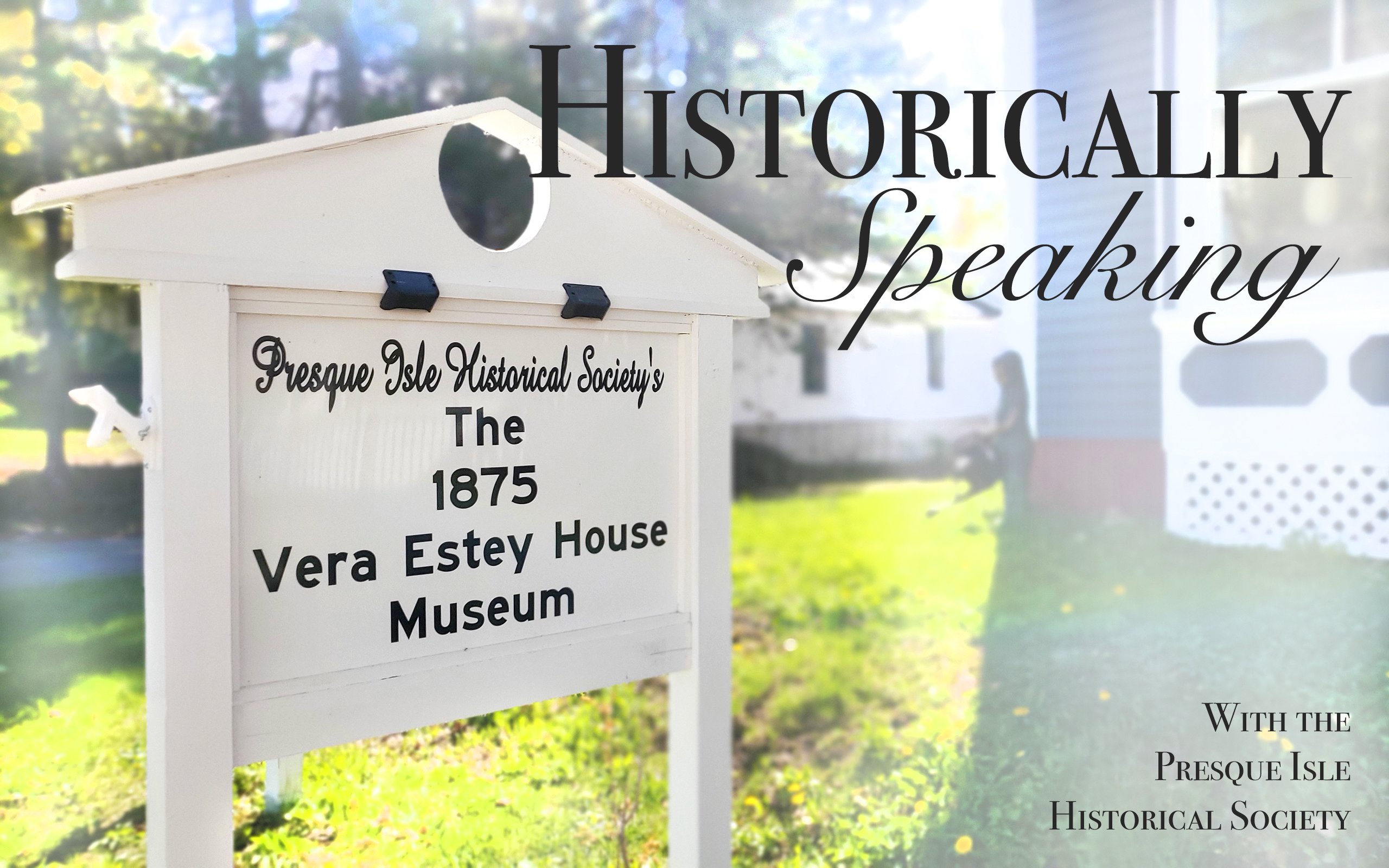It is now officially September and schools everywhere are back in session. It’s interesting to look at the history of schools in this community and how they differed from today. Prior to 1950, the rural areas of Presque Isle were served by 22 one-room schoolhouses. Although Presque Isle was founded in 1828 as Fairbanks Mills, our first village school room did not appear until 1844 in a spare room above Fairbank’s grist mill (located roughly next to the bridge on State Street where Bradley’s Car Wash is today).
According to the 1904 Presque Isle Register, the date the first rural school was built is not known. It was located on the Rackliff Farm on the Centerline Road and known as the “red school house.” The next school was built in Maysville in 1844, “where the burying ground now is” (referring to what we know as the Johnson Cemetery location).
By 1904, the school system consisted of 22 rural schools and 11 in the village. According to old town annual reports, during the 1903-04 school year, 874 students were enrolled. It is said that Presque Isle School compared favorably with other towns with buildings of ample size, well adapted to the purpose, and were either new or in good repair.
The 1884 annual report of Presque Isle for the municipal year ending March 1, 1885, lists 21 rural schoolhouses with 945 “scholars”. The length of each term was 10 weeks with summer and winter semesters. Edward Wiggin was the supervisor of schools and the school budget for salaries and repairs was $3,835.69. Wiggin was a very noteworthy individual in this community. He served in the Civil War, was a member of the State Board of Agriculture, a State Senator, was active in the Maine State Grange, served as Postmaster for the town of Maysville, and wrote a book of the history of Aroostook.
In an excerpt from a letter in the collections of Presque Isle Historical Society by two sisters who attended the Butterfield School from 1923 to 1930, we learn a bit about what a typical day at a rural one-room school was like.
The sisters, Dorothy (Irving) Allen and Helen (Irving) Crosby, reflected on the difficulty of one teacher having to control 20 to 30 students comprising grades 1 through 8 in the same room as well as teaching all subjects to all ages.
In those days, after the bell rang to announce the opening of the school day, the Lord’s Prayer was recited followed by the Pledge of Allegiance. Coats, boots and mittens were hung on hooks at the entrance to the school or hung on the pipe of the pot-bellied stove to dry. In addition, there were two unheated restrooms, most likely attached outhouses, for the students. With no running water, the older boys would usually carry pails of water from local houses. The room would most likely have had a bank of windows on one side with a chalk board covering most of the wall on the other side. There was no playground equipment so recess consisted of playing tag, hide and seek or marbles.
The teacher kept a ruler in the desk for extending punishment, when needed, or the students were made to stand in the corner for a certain amount of time. Word traveled quickly for a time with no cell phones, for if you were disciplined at school, you were likely to be disciplined when you got home as well.
In an oral interview with former one-room schoolhouse teacher Athene Ruth Thompson Anthony, who taught at both the Ross and the Sawyer schools, a funny anecdote was shared about one of the children bringing a dog to school. Anthony was dumbfounded that a dog was coming into the school. One of the kids spoke up and said, “Don’t worry. The dog don’t know nothing.” Apparently, the dog came every day and simply laid with his head on his paws. He went out with the kids at recess and then left with them at the end of the day.
All in all, here are some of the differences from school today. Grades 1 through 8 were in the same room. There were no school buses and children may have had to walk or ride horses 4 or 5 miles to go to school. Boys and girls would have entered through separate doors. The school year and day were shorter due to the fact that students were needed on the farm to do chores and help with the crops. There were no school supplies other than chalk and a slate. Students were often required to pitch in to help teach.
Teachers sometimes lived or “boarded” with the families of the students. Discipline was strict and doled out by the teacher without fear of consequences. There was no such thing as school lunch. Despite the need to work on the farms, school was considered very important, but children were lucky to make it through the 8th grade. That should not be discounted, however, as the final exams were very difficult. High School did not open here until 1910. At that time, students had to pay tuition to attend hence the reason most education ended at grade 8. Attending college was very rare.
Kimberly R. Smith is the secretary/treasurer of the Presque Isle Historical Society.





